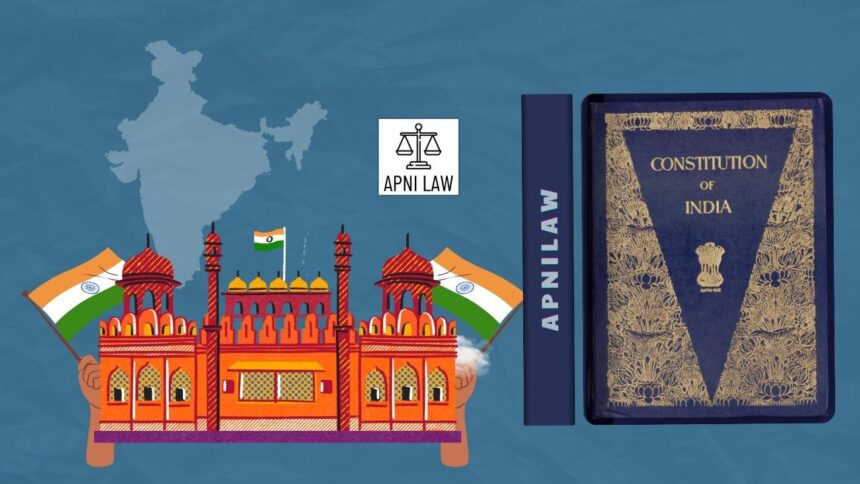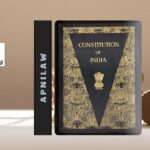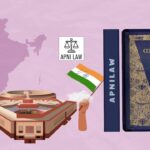Article 352 of the Indian Constitution gives the President the power to declare a National Emergency when the security of India or any part of it is threatened by war, external aggression, or armed rebellion. This provision lies within Part XVIII of the Constitution, which covers emergency powers from Articles 352 to 360. India has experienced three National Emergencies in its history, in 1962 during the Sino-Indian War, in 1971 during the Indo-Pak War, and from 1975 to 1977 during the period of internal disturbance under Prime Minister Indira Gandhi. Each of these emergencies had deep political, constitutional, and social consequences.
What Are The Constitutional Provisions Of Article 352?
Article 352 allows the President to proclaim a National Emergency when the nation’s security faces threats. Initially, the Constitution listed “war, external aggression, or internal disturbance” as grounds for such an emergency. However, the 44th Amendment in 1978 replaced “internal disturbance” with “armed rebellion” to prevent misuse. The President may issue a proclamation even before the actual occurrence of danger if an imminent threat exists.
For the proclamation to remain in force, both Houses of Parliament must approve it within two months. If not approved, it automatically lapses. The President also has the authority to revoke the proclamation at any time if the threat subsides.
What Happens When A National Emergency Is Declared?
Once a National Emergency is declared, the structure of governance undergoes significant changes. The Union government gains enhanced powers, and the Centre can issue binding directions to the States. Parliament gets the authority to legislate on matters listed in the State List, centralizing legislative control. The financial relationship between the Union and States can be altered to meet national needs.
During the emergency, the term of the Lok Sabha can be extended, allowing it to function beyond its normal tenure. Fundamental Rights, particularly those under Article 19, stand suspended, though the 44th Amendment ensured that Articles 20 and 21, protecting life, liberty, and protection in convictions, remain unaffected. This amendment was a crucial safeguard to preserve core human rights.
When Was The First National Emergency Declared And Why?
The first National Emergency was declared in 1962 during the Sino-Indian War. The war broke out when China invaded India’s northern borders, threatening national security. In response, President Dr. S. Radhakrishnan proclaimed a National Emergency based on external aggression. The emergency lasted until 1968, even after the war ended, to stabilize internal conditions and secure India’s defense framework. During this time, the Centre gained greater control over state administration, and certain civil liberties were restricted in the name of security.
What Happened During The 1971 National Emergency?
The second National Emergency was proclaimed in 1971 during the Indo-Pakistani War. Once again, the reason cited was external aggression. The war led to the creation of Bangladesh and was marked by severe military and political tensions. Although this emergency was declared in the context of war, it continued well after hostilities ended. This prolonged emergency enabled the Centre to maintain strong control over the states, further centralizing power and reducing the normal operation of democratic institutions.
Why Was The 1975–77 Emergency Declared?
The third and most controversial National Emergency was declared on June 25, 1975. President Fakhruddin Ali Ahmed issued the proclamation on the advice of Prime Minister Indira Gandhi, citing “internal disturbance” as the reason. This emergency was unique because it was not based on external aggression but on domestic unrest.
The background to this declaration lay in rising political opposition, protests led by Jayaprakash Narayan, and a court judgment invalidating Indira Gandhi’s election due to electoral malpractice. The government justified the move as necessary to restore order, but it soon became a period of authoritarian rule.
What Were The Effects Of The 1975–77 Emergency?
The 1975 Emergency is remembered as one of the darkest chapters in Indian democracy. Fundamental Rights were suspended, and citizens lost the ability to challenge government actions in courts. Press freedom was curtailed, and strict censorship was imposed on media outlets. Opposition leaders, activists, and journalists were arrested under preventive detention laws.
The executive consolidated power at the Centre, and Parliament’s independence was weakened. State governments were often dismissed or controlled directly by the Union. Elections were postponed, effectively extending the ruling government’s tenure without a popular mandate. The emergency ended in March 1977, following widespread national and international criticism, when fresh elections were finally held, leading to the defeat of Indira Gandhi’s government.
How Did The Judiciary Respond To The Emergency?
The judiciary’s response evolved over time. Initially, during the Emergency, the Supreme Court upheld the suspension of Fundamental Rights in the ADM Jabalpur v. Shivkant Shukla (1976) case, allowing the government wide powers. However, this judgment faced strong backlash and was later overturned in spirit by subsequent rulings.
After the Emergency, in the Minerva Mills case (1980), the Supreme Court asserted that the satisfaction of the President under Article 352 could be subject to judicial review. This decision re-established constitutional balance and prevented the absolute concentration of power in the executive.
How Did The 44th Amendment Reform The Emergency Provisions?
In response to the excesses of the 1975–77 Emergency, the 44th Constitutional Amendment Act of 1978 introduced significant safeguards. It made it mandatory for the Cabinet to communicate its decision in writing to the President before declaring an emergency. The term “internal disturbance” was replaced by “armed rebellion” to prevent vague interpretations.
It also ensured that Fundamental Rights under Articles 20 and 21, the right to life, liberty, and protection from wrongful conviction, could not be suspended under any circumstance. Parliament’s power to approve the continuation of an emergency was limited to six months at a time, requiring regular review and approval by both Houses.
What Is The Impact And Legacy Of The National Emergencies?
The experiences of the 1962, 1971, and especially the 1975–77 emergencies deeply influenced India’s political and constitutional landscape. The first two emergencies were justified on grounds of national security, while the third exposed the dangers of political misuse of constitutional powers.
The 1975 Emergency became a turning point in India’s democratic evolution. It demonstrated how easily the concentration of executive authority could suppress civil liberties. The period serves as a powerful reminder of the need for strong institutions, judicial independence, and vigilant citizenry.
Subsequent reforms and judicial pronouncements have made it more difficult for any government to misuse emergency provisions. Today, Article 352 stands as both a tool for national defense and a lesson in the importance of safeguarding democracy.
For any specific query call at +91 – 8569843472
Conclusion
Article 352 remains one of the most powerful yet sensitive provisions in the Indian Constitution. While it equips the nation to respond to crises, it also carries the risk of undermining democratic principles if misused. The three National Emergencies in India’s history, in 1962, 1971, and 1975, each reflect different challenges faced by the country. The lessons from these periods led to constitutional amendments that reinforce accountability, judicial oversight, and human rights protections. Ultimately, the legacy of Article 352 serves as a constant reminder that national security must never come at the cost of constitutional liberty.








